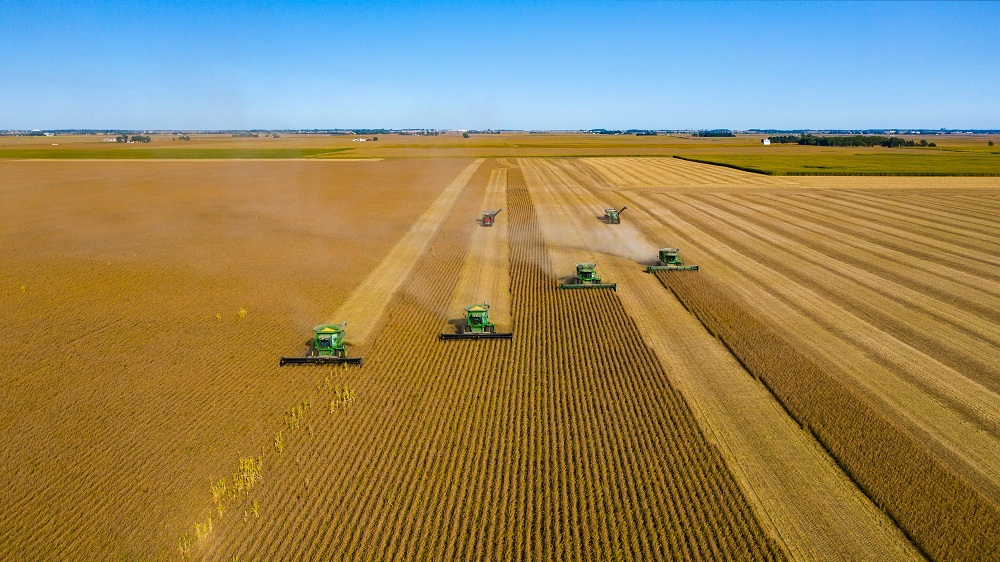The recent bottlenecks in ocean shipping and in ports hit by Covid-19 outbreaks have spotlighted the economic power of one of the world’s most important crops: soybeans.
With Chinese buyers waiting for better margins before buying, and a lack of shipping capacity, exports are down by volume, but, thanks to higher prices due to shipping constraints and hoarding of supply, they’ve increased in value, according to an analysis by Trade Data Monitor, the world’s premier source of trade statistics.
China accounts for 60% of the world’s imports in soybeans, and shrinking profits in its hog sector have dented demand. That’s having an impact around the world.
There is no agricultural product that Latin America dominates as much as soybeans. The continent controls two-thirds of the world’s supply of exports. Soybeans have become one of the world’s most essential crops as a source of protein, and alternative to beef, pork, and chicken. Four of the world’s top seven exporters of soybeans are in Latin America: Brazil, Paraguay, Argentina and Uruguay.
In this century, production and exports have received a massive boost from China imports and consumption. Chinese imports of soybeans increased to $39.5 billion in 2020 from $2.3 billion in 2000. As societies like China become wealthier, they need more protein, and soybeans are the best agricultural source. In addition, the move toward vegetarianism is providing an added boost to soybean farmers.
And Latin America is, by far, the biggest supplier of soybeans to China, although an analysis by TDM, shows that the U.S. is catching up. A trade deal signed in early 2019 in order to appease the Trump administration committed China to ramp up imports of soybeans from the US. Farmers from Kansas and Nebrasks have grabbed market share from farmers in Brazil. In the first six months of 2021, China imported $14.3 billion of soybeans from Brazil, its top source, up 13% over the same period in 2020. During that time, it imported $10.5 billion from the U.S., a whopping 183.1% increase.
Soybeans were introduced to Latin America by colonial occupiers before 1900, but took off as a crop during World War Two. It was an easy, prolific source of protein, to replace damaged livestock herds. In the 1950 and 1960s, agribusiness took over, planting huge soybean crops across Brazil and Argentina.
The tight shipping situation created by Covid outbreaks and businesses recovering from the pandemic has triggered price increases despite stagnant demand. That’s created a distortion in global trade statistics between trade by volume and trade by value.
For example, in the first six months of 2021, Brazil cut exports of soybeans 1.1% to 57.6 million tons from 58.8 million tons. But by value, exports jumped 23.9% to $24.7 billion. Brazil is, by far, the world’s top source of soybeans, and its biggest markets are China, Spain, Turkey, the Netherlands, Thailand and Pakistan.
Other countries have also been hit by a Covid slump. By volume, Uruguay reduced exports 7.5% to 646.9 thousand kilograms, Argentina cut shipments 55.4% to 1.4 million tons. And in Paraguay, they were down 7.3% to three million tons. But by value exports from all three countries soared.
China relies heavily on Brazil and the U.S. for soybeans. It imports minimal amounts from Argentina, Uruguay and Paraguay. Instead, Paraguay exports much of its production to other countries in Latin America. Its top markets are Argentina, Brazil, Russia, Tunisia and Uruguay.
Argentina’s top markets are China, Egypt, Chile, the U.S., and Uruguay. It’s also suffered from China’s promises to ramp up shipments from the U.S. In the first five months of 2021, Argentina cut exports to China 71.7% to 695.5 million kilograms, according to TDM.


